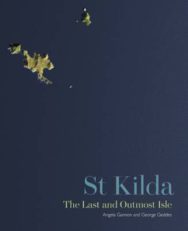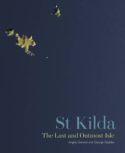
ABOUT THIS BOOK
PUBLISHER: Royal Commission on the Ancient & Historical Monuments of Scotland
FORMAT: Hardback
ISBN: 9781902419916
RRP: £25.00
PAGES: 224
PUBLICATION DATE:
October 15, 2015
BUY THIS BOOK
As an Amazon Associate and Bookshop.org affiliate we earn from qualifying purchases.
St Kilda: The Last and Outmost Isle
Angela Gannon
George Geddes
In 1527 Hector Boece, the first Principal of King’s College Aberdeen, wrote in his extensive ‘History of the Scottish People’ of an island of rocky crags and prehistoric sheep, which could only be reached through extreme danger to life. It was, he explained, ‘the last and outmaist Ile’ of Scotland. It was St Kilda. St Kilda breaks the waters of the Atlantic Ocean some 100 miles west of the mainland, and 40 miles west of the Outer Hebridean island of North Uist. On clear days it appears as a dark silhouette on a distant horizon. Approach it, and it resolves into seven shapes – the four islands of Hirta, Boreray, Soay and Dun, and three towering sea stacks. It is an enigmatic and awe-inspiring landscape, a starkly beautiful vision of ‘life on the edge’ which has fascinated everyone from travellers, antiquarians and conservationists to writers,film crews and tourists. And, perhaps as a result, it is one of the most mythologised and misunderstood places on earth. Archaeologists Angela Gannon and George Geddes have spent over nine months living and working on St Kilda, and have been part of a team which has been researching its complex and remarkable history for more than a decade.In this new book they turn the popular perception of the archipelago on its head. St Kilda, they argue, has never existed in total isolation, but has always been linked to a network of communities scattered across the north western seaboard and the Highlands of Scotland. ‘The Last and Outmost Isle’ pulls St Kilda back from the ‘end of the world’ to tell a compelling story of triumph over geographical adversity. What makes these islands so special is not their distance from ‘civilisation’, but rather their enduring capacity to remain a living, connected part of Scotland over the course of some three thousand years.
Angela Gannon
Angela Gannon, an RCAHMS archaeologist, led the major field survey project on St Kilda in partnership with the National Trust for Scotland, and is an expert on Scotland’s island landscapes. George Geddes was the National Trust for Scotland’s St Kilda archaeologist 2008-9, living on the islands for six months. Now an archaeologist at RCAHMS, he specialises in thestudy of Scotland’s remote islands.











